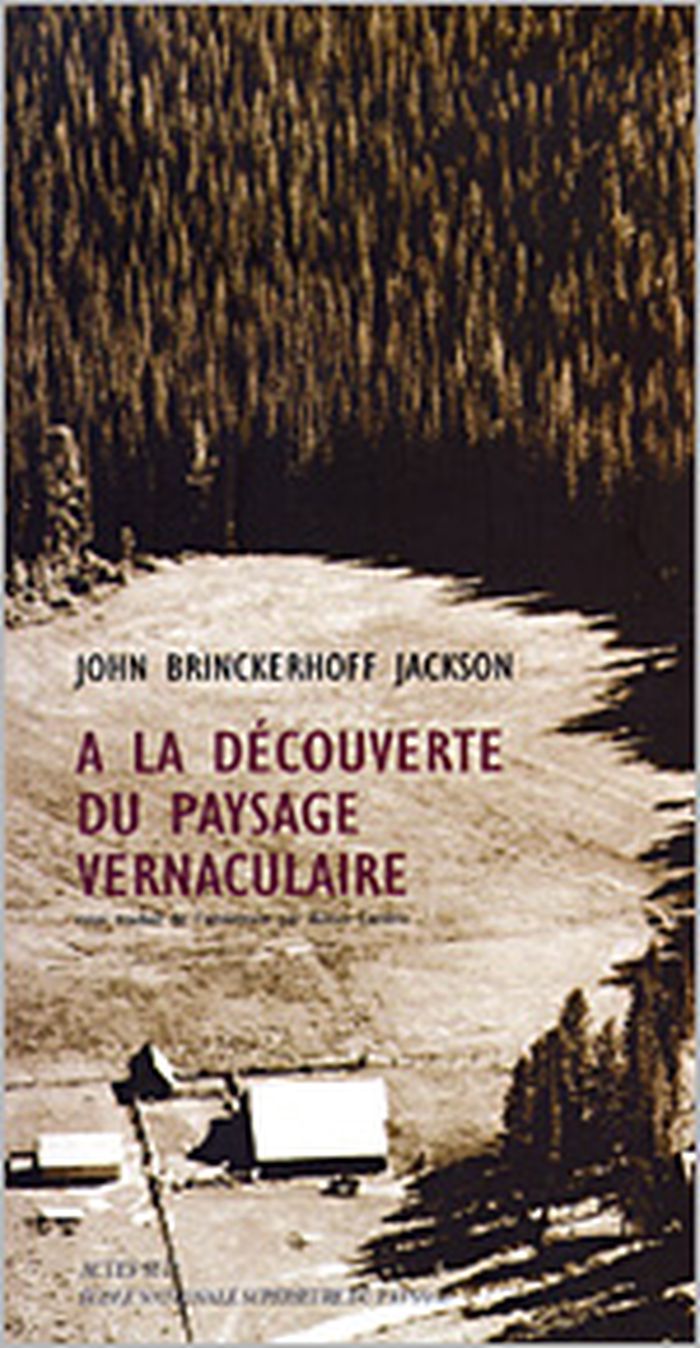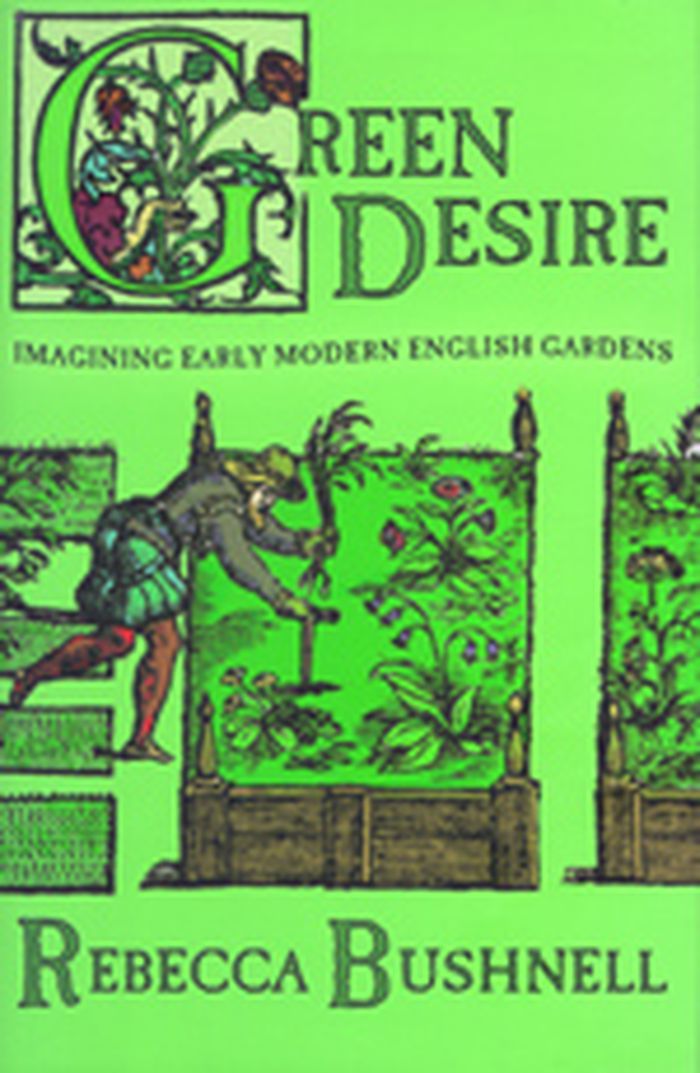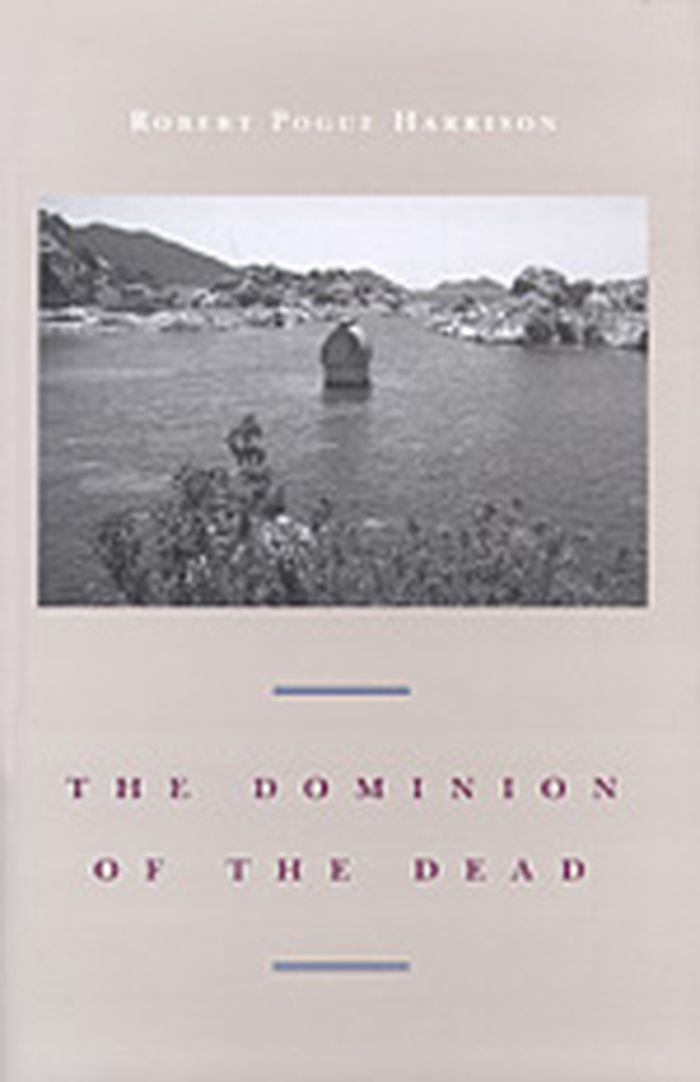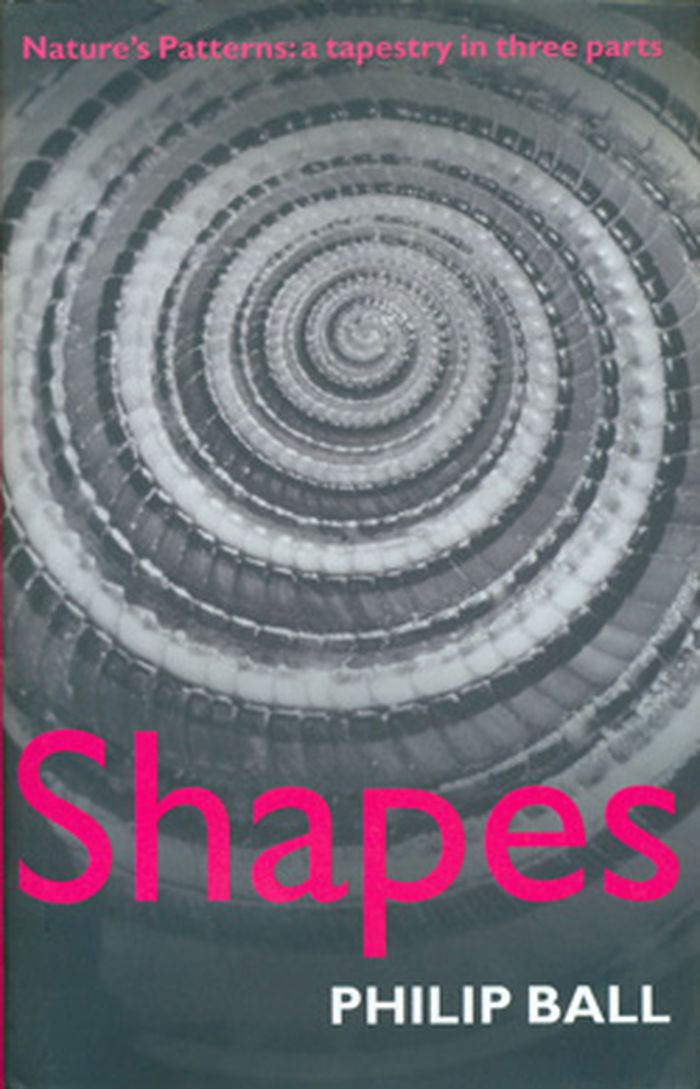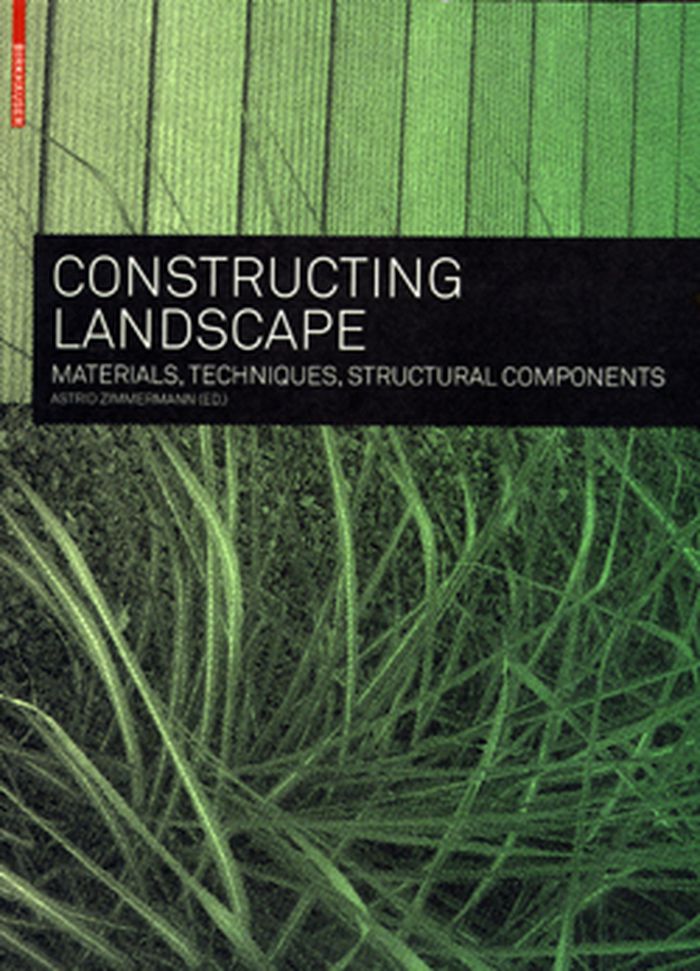$44.25
(disponible sur commande)
Résumé:
A la découverte du paysage vernaculaire est le premier livre de Jackson traduit en France. L’auteur y définit tout d’abord le paysage : avant d’être contemplé et apprécié esthétiquement, il est produit et habité par les hommes, qui organisent collectivement, selon le principe du bien-être, leur cadre d’existence sur la Terre. Il nous livre ensuite une distinction(...)
À la découverte du paysage vernaculaire
Actions:
Prix:
$44.25
(disponible sur commande)
Résumé:
A la découverte du paysage vernaculaire est le premier livre de Jackson traduit en France. L’auteur y définit tout d’abord le paysage : avant d’être contemplé et apprécié esthétiquement, il est produit et habité par les hommes, qui organisent collectivement, selon le principe du bien-être, leur cadre d’existence sur la Terre. Il nous livre ensuite une distinction fondamentale entre le "paysage politique" (produit par le pouvoir) et le "paysage vernaculaire" (fabriqué localement par les habitants) qui révèle deux manières d’aménager l’espace à travers l’histoire. Il observe aussi, avec humour, le devenir des paysages contemporains : les parcs publics, l’habitat mobile… et y voit, avec confiance, de nouvelles formes de la conscience paysagère où habiter ne se confond plus nécessairement avec demeurer.
Théorie du paysage
The education of the eye : painting, landscape, and architecture in eighteenth-century Britain
$30.95
(disponible sur commande)
Résumé:
"The Education of the Eye" examines the origins of visual culture in eighteenth-century Britain. It claims that at the moment when works of visual art were first displayed and contemplated as aesthetic objects, two competing descriptions of the viewer or spectator promoted two very different accounts of culture. The first was constructed on knowledge, on what one(...)
The education of the eye : painting, landscape, and architecture in eighteenth-century Britain
Actions:
Prix:
$30.95
(disponible sur commande)
Résumé:
"The Education of the Eye" examines the origins of visual culture in eighteenth-century Britain. It claims that at the moment when works of visual art were first displayed and contemplated as aesthetic objects, two competing descriptions of the viewer or spectator promoted two very different accounts of culture. The first was constructed on knowledge, on what one already knew, while the second was grounded in the eye itself. Whereas the first was most likely to lead to a socially and politically elite form of visual cutlure, the second, it was held, would almost certainly end up in the chaos of the mob. But there was another route through these conflicting accounts of the visual that preserved the education of the eye while at the same time allowing the eye freedom to enter into the realm of culture. This third route, that of sentimental look, is explored in a series of contexts: the gallery, the pleasure garden, the landscape park, and the country house. This book sets out to reclaim visual culture for the democracy of the eye and to explain how aesthetic contemplation may, once more, be open to all who have eyes to look.
Théorie du paysage
$44.95
(disponible en magasin)
Résumé:
For Rebecca Bushnell, English gardening books tell a tale of the human love for plants and our will to make them do as we wish. These books evoke the desires of gardeners: they show us gardeners who, like poets, imagine not just what is but what should be. In particular, the earliest English garden books, such as Thomas Hill’s The Gardeners Labyrinth or Hugh Platt’s(...)
Green desire : imagining early modern English gardens
Actions:
Prix:
$44.95
(disponible en magasin)
Résumé:
For Rebecca Bushnell, English gardening books tell a tale of the human love for plants and our will to make them do as we wish. These books evoke the desires of gardeners: they show us gardeners who, like poets, imagine not just what is but what should be. In particular, the earliest English garden books, such as Thomas Hill’s The Gardeners Labyrinth or Hugh Platt’s Floraes Paradise, mix magical practices with mundane recipes even when the authors insist that they rely completely on their own experience in these matters. Like early modern “books of secrets,” early gardening manuals often promise the reader power to alter the essential properties of plants: to make the gillyflower double, to change the lily’s hue, or to grow a cherry without a stone. "Green Desire" describes the innovative design of the old manuals, examining how writers and printers marketed them as fiction as well as practical advice for aspiring gardeners. Along with this attention to the delights of reading, it analyzes the strange dignity and pleasure of garden labor and the division of men’s and women’s roles in creating garden art. The book ends by recounting the heated debate over how much people could do to create marvels in their own gardens. For writers and readers alike, these green desires inspired dreams of power and self-improvement, fantasies of beauty achieved without work, and hopes for order in an unpredictable world.
Théorie du paysage
The dominion of the dead
$33.95
(disponible sur commande)
Résumé:
How do the living maintain relations to the dead? Why do we bury people when they die? And what is at stake when we do? In "The dominion of the dead", Robert Pogue Harrison considers the supreme importance of these questions to Western civilization, exploring the many places where the dead cohabit the world of the living--the graves, images, literature, architecture, and(...)
The dominion of the dead
Actions:
Prix:
$33.95
(disponible sur commande)
Résumé:
How do the living maintain relations to the dead? Why do we bury people when they die? And what is at stake when we do? In "The dominion of the dead", Robert Pogue Harrison considers the supreme importance of these questions to Western civilization, exploring the many places where the dead cohabit the world of the living--the graves, images, literature, architecture, and monuments that house the dead in their afterlife among us.
Théorie du paysage
$86.95
(disponible sur commande)
Résumé:
The art of designing both unites and divides landscape architecture and architecture. Despite having a long tradition, landscape architecture has lacked a concise and illuminating presentation of the fundamental principles underlying its design and planning concepts. This much sought-after book has evolved out of more than twenty years of teaching experience. The(...)
Opening spaces : design as landscape architecture
Actions:
Prix:
$86.95
(disponible sur commande)
Résumé:
The art of designing both unites and divides landscape architecture and architecture. Despite having a long tradition, landscape architecture has lacked a concise and illuminating presentation of the fundamental principles underlying its design and planning concepts. This much sought-after book has evolved out of more than twenty years of teaching experience. The authors distinguish between the variable factors such as climate, growth of vegetation etc. which are determining parameters in landscape architecture, and the more abstract element of design. They describe the ideal design components and demonstrate the extent to which natural features such as surfaces, spaces, paths, borders, hard and soft materials shape and determine the designs. This book clearly reveals how concepts such as order and chaos, way and goal, intention and reaction form the basis for landscape design, just as they do in architecture.
Théorie du paysage
livres
$29.95
(disponible sur commande)
Résumé:
In the second of three books, the author explores the elusive rules that govern flow in nature - from the swirl of a wisp of smoke and eddies in rivers, to the huge persistent storm that is the Great Spot on Jupiter. Whether the movement of wind, water, sand, or flocks of birds, he explains the science of the extraordinary forms and patterns that emerge.
Flow: a tapestry in three parts
Actions:
Prix:
$29.95
(disponible sur commande)
Résumé:
In the second of three books, the author explores the elusive rules that govern flow in nature - from the swirl of a wisp of smoke and eddies in rivers, to the huge persistent storm that is the Great Spot on Jupiter. Whether the movement of wind, water, sand, or flocks of birds, he explains the science of the extraordinary forms and patterns that emerge.
livres
avril 2008
Théorie du paysage
livres
$29.95
(disponible sur commande)
Résumé:
Patterns are everywhere in nature: in the ranks of clouds in the sky, the stripes of an angelfish, the arrangement of petals in flowers. Where does this order and regularity come from? As Philip Ball reveals in this third part of the trilogy, this order creates itself. The patterns we see come from self-organization. Indeed, scientists have found that there is a(...)
Branches: a tapestry in three parts
Actions:
Prix:
$29.95
(disponible sur commande)
Résumé:
Patterns are everywhere in nature: in the ranks of clouds in the sky, the stripes of an angelfish, the arrangement of petals in flowers. Where does this order and regularity come from? As Philip Ball reveals in this third part of the trilogy, this order creates itself. The patterns we see come from self-organization. Indeed, scientists have found that there is a pattern-forming tendency inherent in the basic structure and processes of nature, whether living or non-living, so that from a few simple themes, and the repetition of simple rules, endless beautiful variations can arise.
livres
avril 2008
Théorie du paysage
$21.95
(disponible sur commande)
Résumé:
Then first part of a trilogy of books exploring the science of patterns in nature, this book looks at how shapes form. From soap bubbles to honeycombs, delicate shell patterns, and even the developing body parts of a complex animal like ourselves, the author uncovers patterns in growth and form in all corners of the natural world, explains how these patterns are(...)
Shapes: nature's patterns: a tapertry in three parts
Actions:
Prix:
$21.95
(disponible sur commande)
Résumé:
Then first part of a trilogy of books exploring the science of patterns in nature, this book looks at how shapes form. From soap bubbles to honeycombs, delicate shell patterns, and even the developing body parts of a complex animal like ourselves, the author uncovers patterns in growth and form in all corners of the natural world, explains how these patterns are self-made, and describes why similar shapes and structures may be found in very different settings, orchestrated by nothing more than simple physical forces. This book will make you look at the world with fresh eyes, seeing order and form in places you'd least expect.
Théorie du paysage
$29.00
(disponible sur commande)
Résumé:
Preface by Fritz Haeg. Texts by Fritz Haeg, Diana Balmori, Rosalind Creasy, Michael Pollan, Lesley Stern, Michelle Christman, Stan Cox, Michael Foti. The Edible Estates project proposes the replacement of the domestic front lawn with a highly productive edible landscape. It was initiated by architect and artist Fritz Haeg on Independence Day, 2005, with the planting of(...)
Edible estates: Attack on the front lawn. A project by Fritz Haeg
Actions:
Prix:
$29.00
(disponible sur commande)
Résumé:
Preface by Fritz Haeg. Texts by Fritz Haeg, Diana Balmori, Rosalind Creasy, Michael Pollan, Lesley Stern, Michelle Christman, Stan Cox, Michael Foti. The Edible Estates project proposes the replacement of the domestic front lawn with a highly productive edible landscape. It was initiated by architect and artist Fritz Haeg on Independence Day, 2005, with the planting of the first regional prototype garden in the geographic center of the United States, Salina, Kansas. Since then three more prototype gardens have been created, in Lakewood, California; Maplewood, New Jersey and London, England. Edible Estates regional prototype gardens will ultimately be established in nine cities across the United States. Edible Estates: Attack on the Front Lawn documents the first four gardens with personal accounts written by the owners, garden plans and photographs illustrating the creation of the gardens--from ripping up the grass to harvesting a wide variety of fruits, vegetables and herbs. Essays by Haeg, landscape architect Diana Balmori, garden and food writer Rosalind Creasy, author Michael Pollan and artist and writer Lesley Stern set the Edible Estates project in the context of larger issues concerning the environment, global food production and the imperative to generate a sense of community in our urban and suburban neighborhoods. This smart, affordable and well-designed book also includes reports and photographs from the owners of other edible front yards around the country, as well as helpful resources to guide you in making your own Edible Estate.
Théorie du paysage
$75.95
(disponible sur commande)
Résumé:
This book is a systematically structured reference work about the techniques and theories applied when constructing outdoor spaces. All the relevant topics are covered, from materials and surfaces via building outdoor features to the use of plants. The book shows how landscape designers and architects can implement their creative ideas with expertise and technical skill.
Théorie du paysage
septembre 2006, Basel, Boston, Berlin
Constructing landscape : materials. techniques, structural components
Actions:
Prix:
$75.95
(disponible sur commande)
Résumé:
This book is a systematically structured reference work about the techniques and theories applied when constructing outdoor spaces. All the relevant topics are covered, from materials and surfaces via building outdoor features to the use of plants. The book shows how landscape designers and architects can implement their creative ideas with expertise and technical skill.
Théorie du paysage
